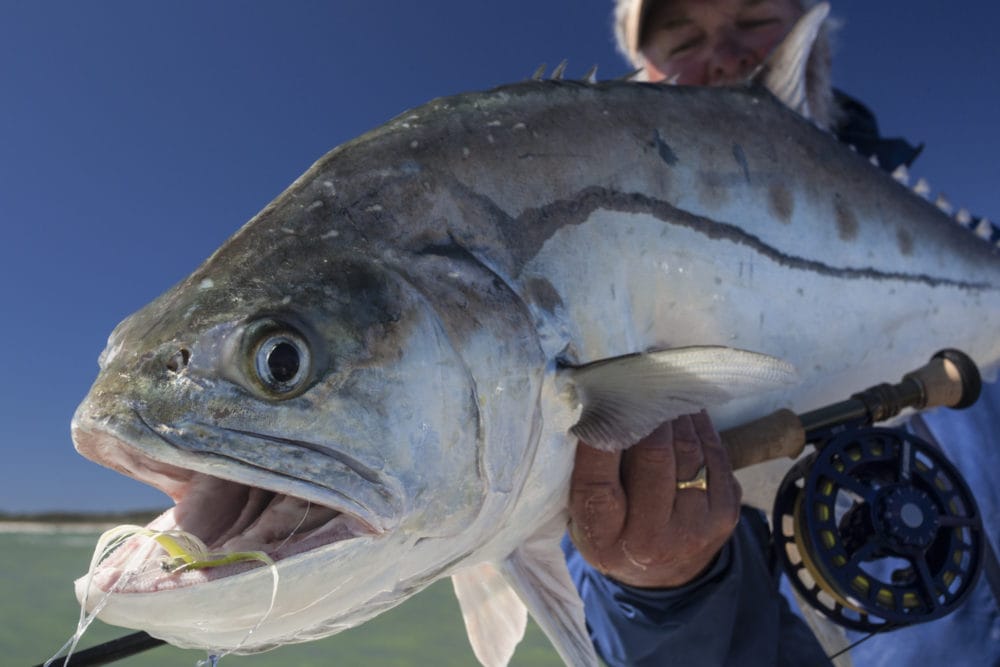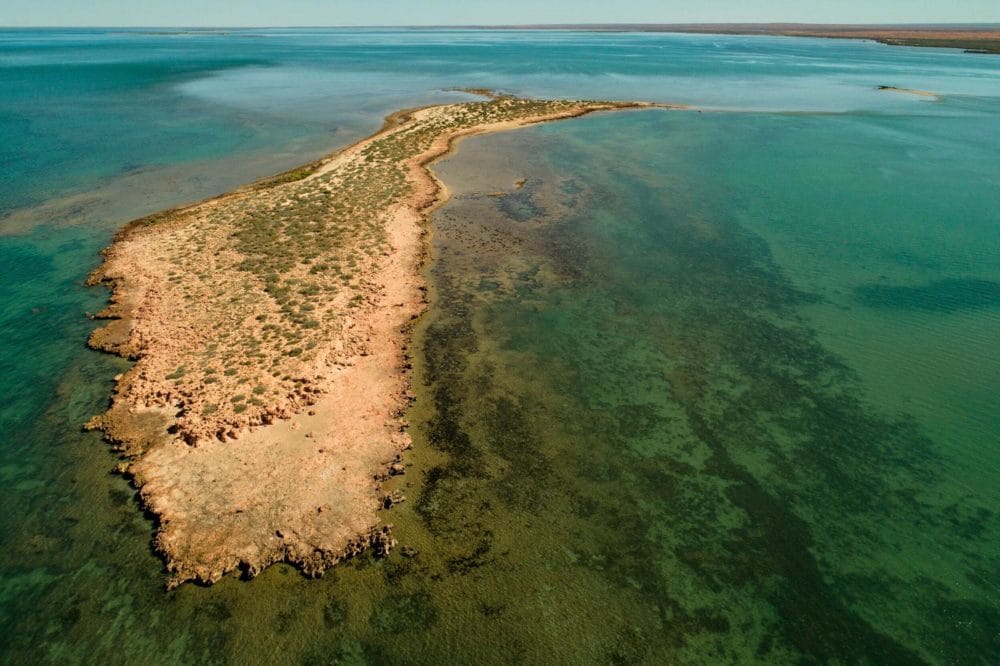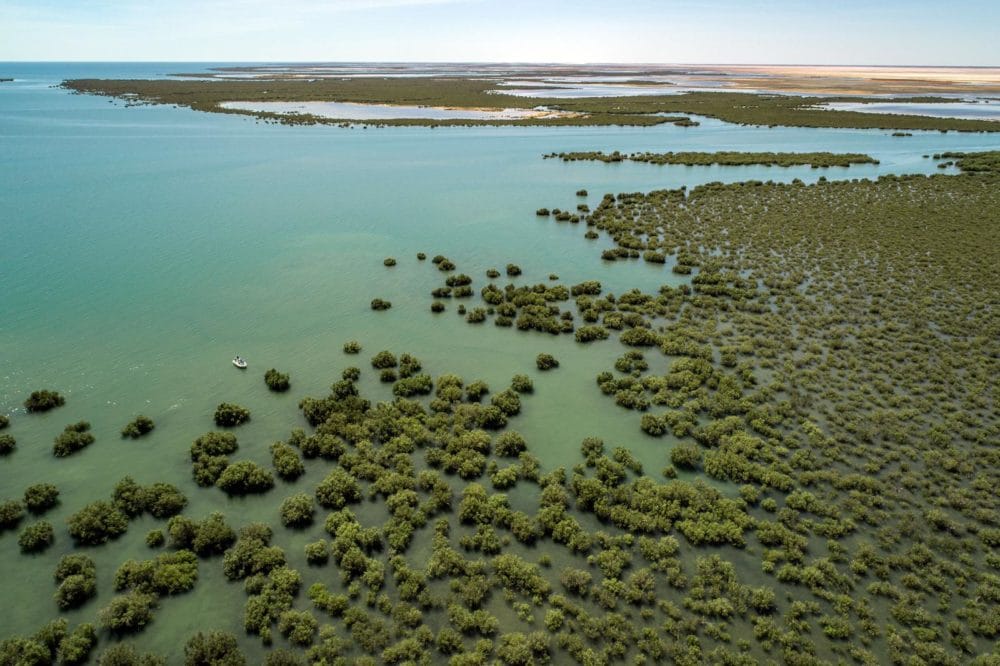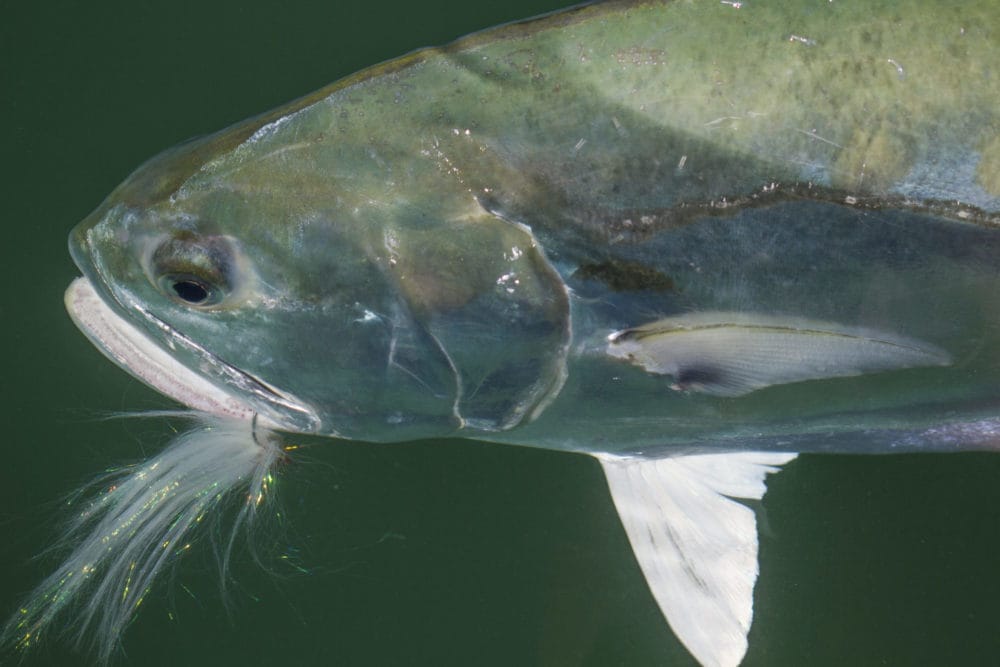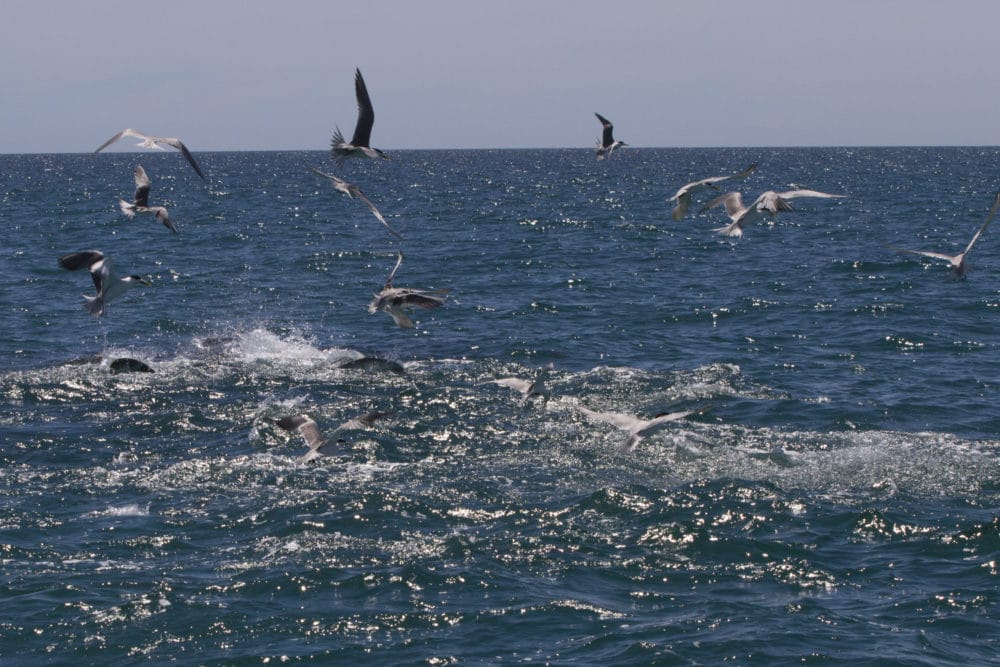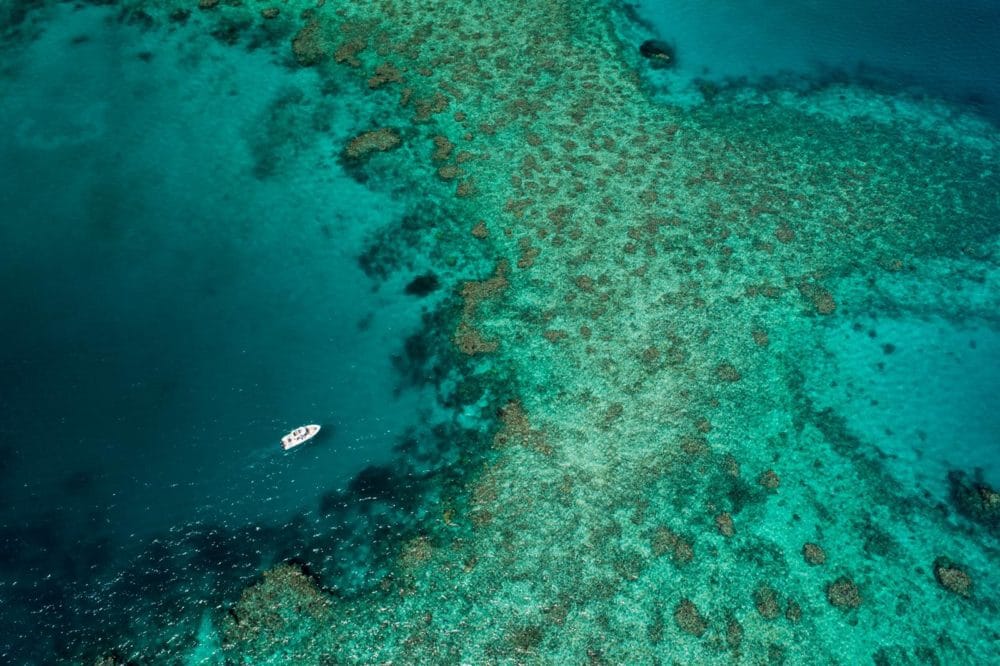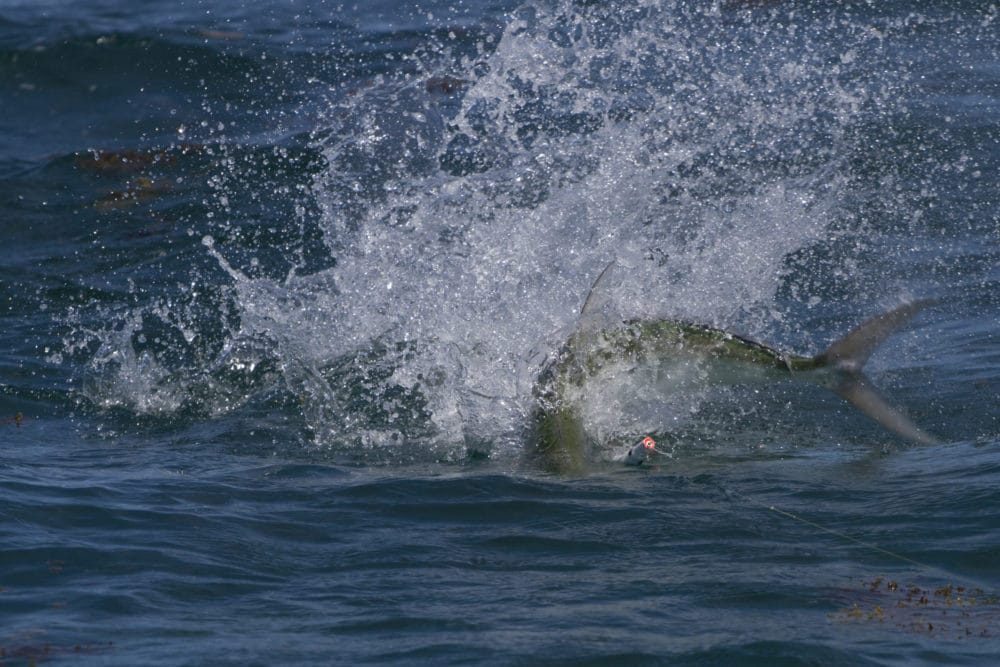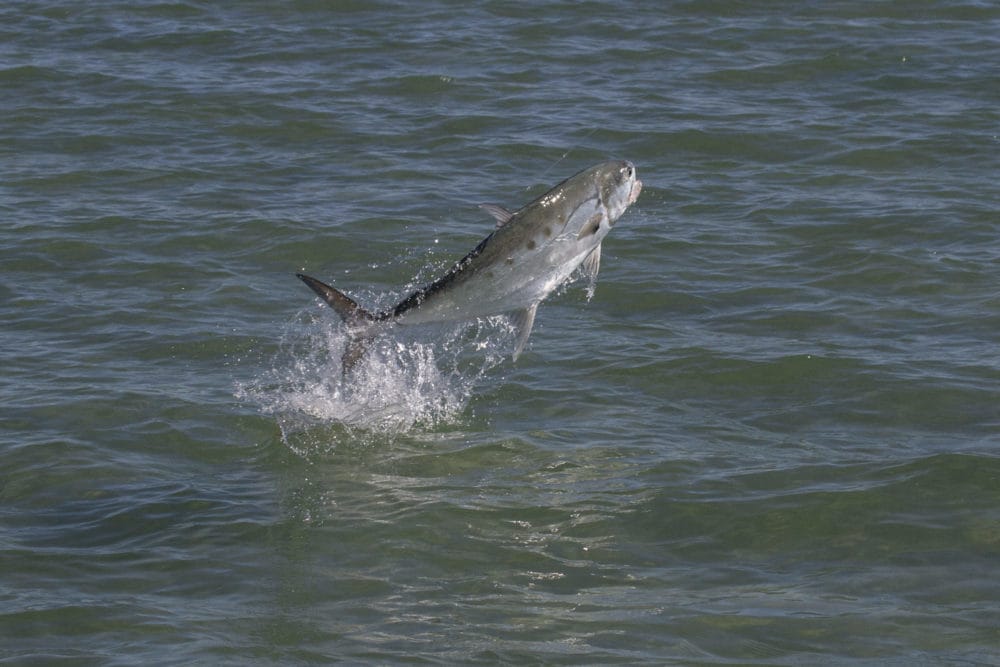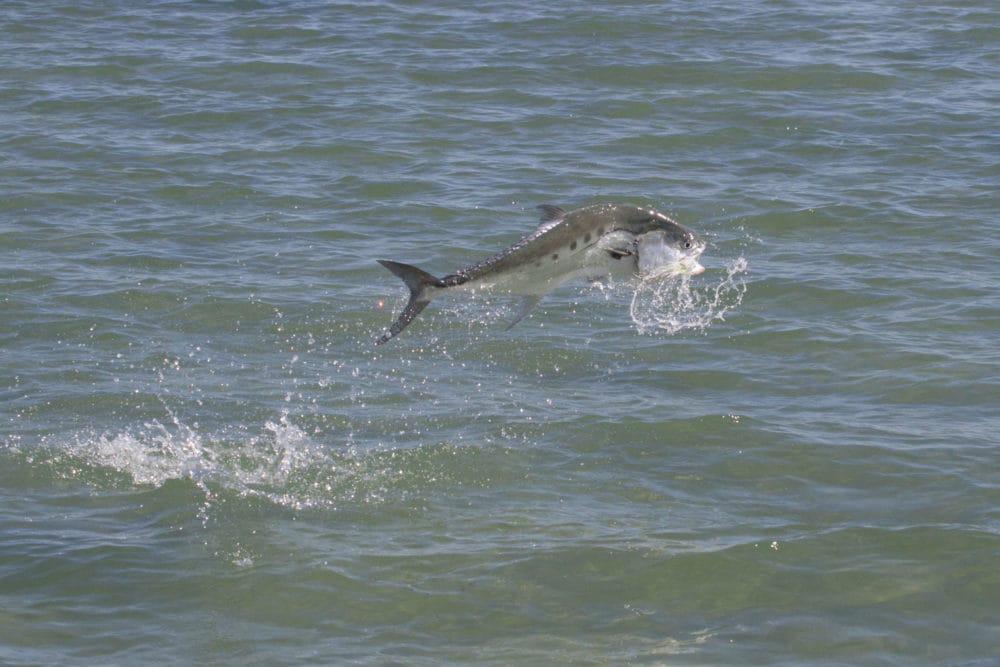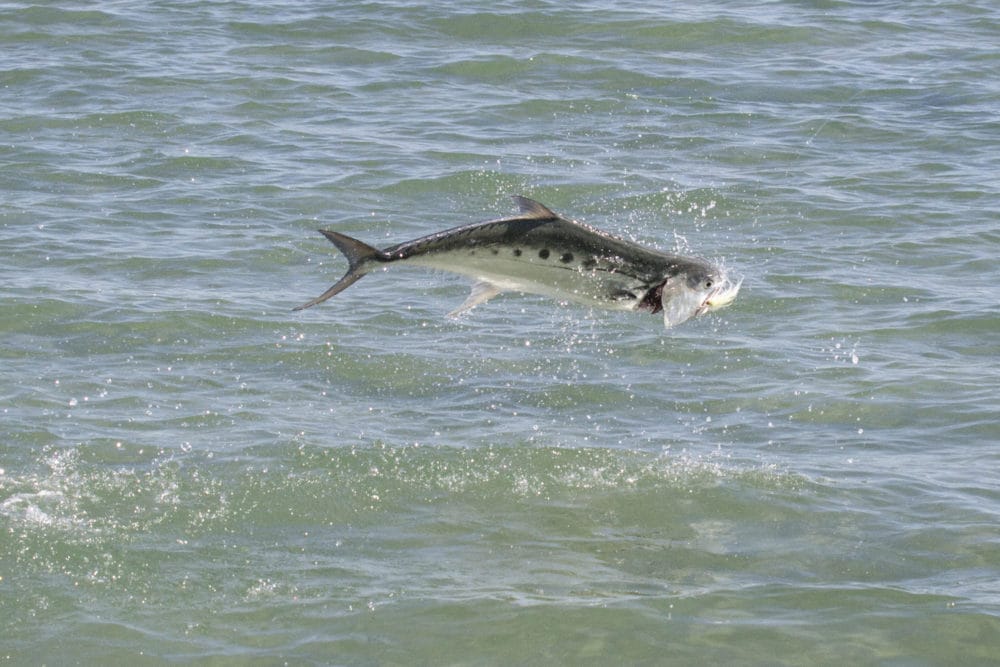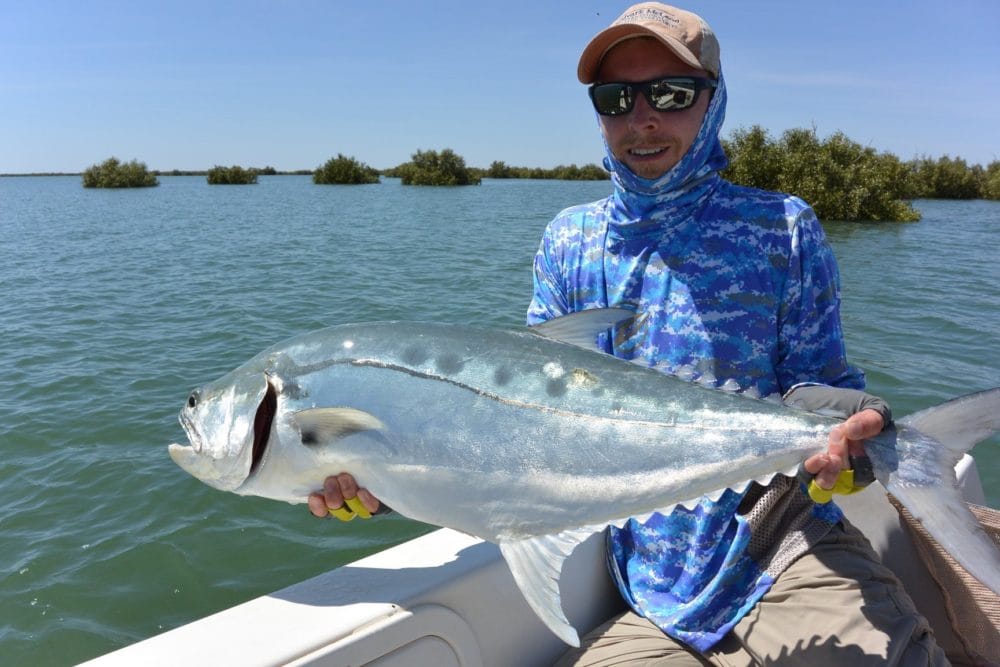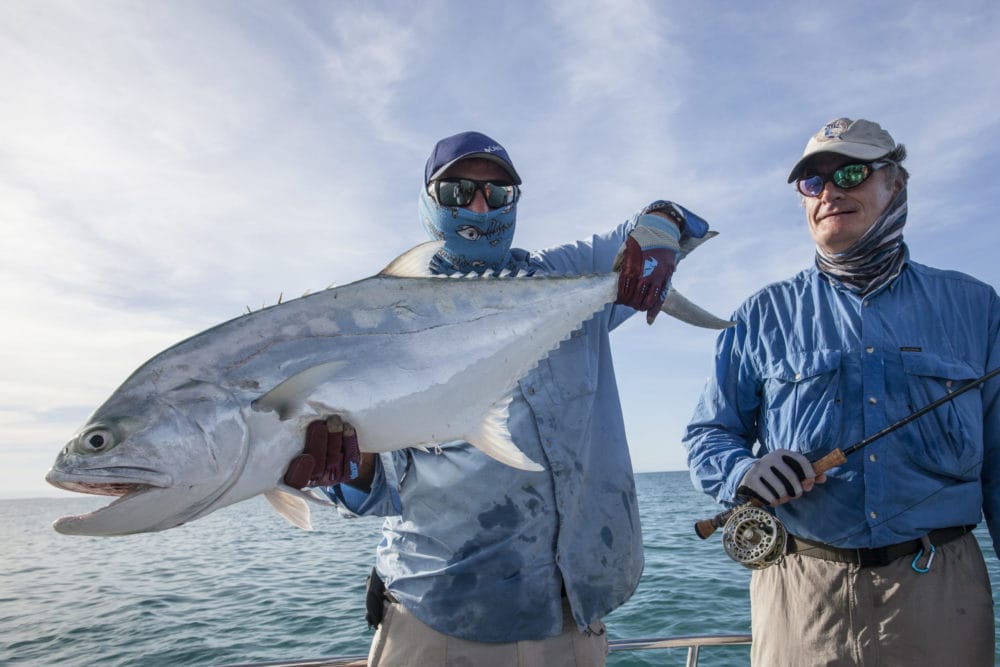Queenfish are one of the iconic saltwater fly fishing species of Australia. This article has been provided by Great Fishing Adventures of Australia and written by the notorious Australian saltwater fly fisherman Peter Morse.
There are several species of queenfish, but the most frequently encountered and the fish you’ll see bring on the widest grins is the common or giant queenfish – (Scomberoides commersonnianus). Along with barramundi, queenfish are considered the quintessential inshore sport fish of northern Australia.
Prolific, willing, and acrobatic they tick an awful lot of boxes for fly fishers. Broadly they’re a member of the mackerel family but actually fall in somewhere between the trevallies and the mackerel without being anything like either of them. They are voracious predators — some years ago I was guiding two clients and we found a large bait school trapped against the beach by a pack of queenfish. The first angler had released a fish as the other had hooked up. The first angler cast his fly into the melee and hooked up as well. It was the same fish that his mate was hooked up to. When they’re feeding they are ferocious.
Right across northern Australia these are a fish that can turn up anywhere, and at anytime, they are the everyday fish of fly fishers in that part of the world. There’s not a niche in our northern waters where you won’t run across them, from well up a mangrove creek to open water and everywhere in between. They can be reasonably “residential” in areas that have structure, as well as a good passing source of baitfish brought by the currents, and you can also encounter them in open water where there’s bait and when they’re travelling between feeding grounds. But you’ll especially find them in those places where baitfish are accumulated by current meeting structure.
As a guide, on a tough day the smaller queenfish could always be relied on to turn the day around for you, to get rods bent. On better days the smaller fish can cause plenty of frustration as they shoot in and grab a fly meant for larger targets. Their willingness to hit a fly seems endless and every one fights beyond its size. But there are also methods to avoid the smaller ones which at times you will want to adopt — using larger flies helps and slowing the retrieve speed also helps – if you find your fly being attacked by a horde of small queenfish, just stop the fly, let it sink and they’ll go away.
Its also a very good idea to use barbless hooks as the smaller fish will usually quite easily thrash themselves off the hook if you give them a little slack. They have nasty concealed spines, its best to let the guide handle them, and if you do want a photo listen to what the guide has to say about handling them.
But as they get larger they become a different animal. Broad sided and bright silver with a row of 5-6 prominent dots down their side they’re a spectacular looking fish. The size and the position of their mouth and eyes will tell you a lot about them and how they feed. Their mouths are big and they have small, fine, but sharp teeth. The eyes are placed well forward and their sleek bodies are built for speed. They feed at speed, you simply cannot move a fly too fast for queenfish, what you think is a fast retrieve is often barely able to attract their attention.
Queenfish become a much more appealing fish once they get out beyond the 80-90cms mark. Above this length they fill out, and once over a meter long you have a serious fish on your hands. Like so many other species in this country a meter long fish is the magic mark to better, after that it becomes a matter of personal bests. Unlike so many other fish found in this part of the world, these are a clean fighter and won’t deliberately take you around reefs and into snags, so unless you have mangrove thickets nearby, and they do swim for them, there’s no need to go hard and stop them.
There are many scenarios where you’ll encounter queenfish, up creeks, along beaches, on the flats and in a multitude of deeper water scenarios. Up mangrove creeks they’re usually either small fish gathered around a snag, or big singles cruising the edges of the mangroves looking for big mullet. In most instances you’ll drive away from the small fish (unless it’s a slow day), and unless you’ve seen them crashing into bait the big fish will come out of nowhere. If you have the room let them run.
Around tidal creek mouths they’ll take up station, especially on the incoming tide, and will harass baitfish being swept into the creek. This is a great opportunity and if the creek bank is firm and sandy it’s a good time to get off the boat, stretch your legs and catch some fish from the shore – but anywhere in crocodile country stay out of the water and listen to what your guide has to say.
Shore based fishing for bigger queenfish is really great sport and apart from creek mouths you’ll also find them cruising along the beaches, around rocky headlands and especially on flats. Flats queenfish are a pretty special creature and things really move up a gear for fly fishermen when the big fish are found in the shallows – for most this situation is the pinnacle of chasing these great fish. They’re drawn onto the flats by available food, especially big schools of baitfish, and in the shallow clear water its best to match the hatch. You’ll very frequently come across them when you’re chasing other flats species, and at times its difficult to not be tempted to throw a fly at them, especially when they’re up around that meter mark.
But its an unwritten law of fishing that the moment you throw your crab fly at a queenfish and it eats it, a school of permit will show up, because at times, usually the wrong time, they will eat a crab fly. If you do slip up and can’t help yourself by “accidentally” throwing your fly at a queenfish, then suddenly realize what you’ve done, just let the fly sink to the bottom, use a slow retrieve and most times they won’t eat it.
They’re not stupid in the skinny water and good flats flies are reasonable representations of baitfish but with minimal flash. There are two options – either cast the fly right in front of them and strip it right away and hope for a reactive take, or cast well ahead of them, let the fly sit there then strip the fly as fast as you can move it when they get close to it. This is spectacular and challenging fishing that usually requires long and accurate casts and a finer touch than the deeper water fish.
Schooled up queenfish in deeper water are often not the sharpest of fish in the ocean, and you can catch them using a wide variety of techniques. Queenfish are not always “on”, sometimes if the tides or currents are slow, or the water temperatures are cooling, like a lot of fish, they can go quiet; not even queenfish eat all the time. But there are still ways of catching them on flies even when they’re quiet. Flies sunk deep down to them with a fast retrieve can get eaten. A bit of berley (chum) in the water can definitely change their mood, and if you’re fishing around known haunts and they aren’t responding to flies, smart guides will use a hookless teaser to locate them and to stir them up.
If I was to have just one rod, line and fly for queenfish it would be an #8 weight with a floating line and on the end of it I’d use a plain white Clouser minnow, but you’re going to catch mostly smaller to middling sized fish with that gear.
For big queenfish a 4/0 Fat Boy fly is very hard fly to beat. These are a great imitation of a mullet or a hardyhead and they can be tied with scarce flash or none at all. Deceivers are excellent, as are any well tied baitfish representation. They particularly like garfish (ballyhoo) as well.
Usually when you get among the queenfish there’s going to be a lot of them and if they’re big fish you don’t want to be tied up endlessly on light tackle. A #9 or a #10 weight with a floating line means you can cast bigger flies further and this is a big help, especially on the flats, and you can land them relatively quickly. Popper flies and crease flies are dynamite on queenfish, and the bites are usually spectacular. The heavier rods and a floating line allow you to fish these flies better.
Queenfish have many speeds from disinterested and dead slow to moving like a missile. At times just hitting the water will get a bite from them and fortunately they’ll often spin around and eat a fly that’s landed behind them. But on the flats in particular you’ll need to lift your game, to cast further, present the fly better and most importantly get your retrieve right. A single fish can make a dozen passes at a fly without eating it. With just a little bit of competition that can very quickly change.
But most of the time queenfish are so competitive and so attuned to movement, and to eating most things in their path, that anything that hits the water will get eaten by them. This suite of attributes makes them one of the great fly rod fish of the world.
If you would like more information about fly fishing in Australia and destinations to target queenfish on please contact Alex Jardine or call our office on +44(0)1980 847 389.

